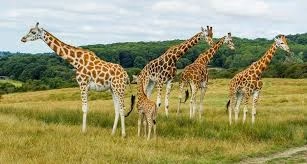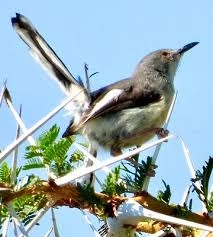Pian Upe Wildlife Reserve and Its Fascinating Wildlife-Rothschild’s giraffes in Uganda-Birdwatching in Pian Upe
Nestled in northeastern Uganda, Pian Upe Wildlife Reserve is a treasure trove of biodiversity and untouched wilderness. As Uganda’s second-largest protected area, this reserve offers a unique blend of history, diverse wildlife, and adventure.
For travelers seeking an off-beaten-path safari experience, Pian Upe is an emerging destination that promises to leave a lasting impression.
A Glimpse into the History of Pian Upe Wildlife Reserve
Pian Upe Wildlife Reserve, part of the Karamoja sub-region, was gazetted as a conservation area in 1958. Initially named the Debasien Animal Sanctuary, it was later expanded and renamed Pian Upe.
The name “Pian Upe” reflects the region’s cultural heritage, referring to the Pian and Upe ethnic groups that have traditionally inhabited the area.
The reserve has undergone significant conservation efforts, including the reintroduction of key wildlife species like Rothschild’s giraffes, which were absent for decades.
These efforts aim to restore Pian Upe’s status as one of Uganda’s premier wildlife sanctuaries.
Location and Accessibility
Pian Upe Wildlife Reserve covers an impressive 2,275 square kilometers and is located approximately 350 kilometers northeast of Kampala.
It borders Mount Elgon National Park to the south and the Matheniko and Bokora Wildlife Reserves to the north.
Wildlife at Pian Upe Wildlife Reserve
Pian Upe is home to an impressive array of wildlife, making it a haven for nature lovers and wildlife enthusiasts. Key species include:
Mammals
Rothschild’s Giraffes

Recently reintroduced, these majestic giants are one of the reserve’s main highlights.
Cheetahs: Pian Upe boasts Uganda’s only population of cheetahs, offering a rare sighting for visitors.
Zebras: Large herds of zebras roam the reserve’s Savannah plains.
Other mammals: Lions, elands, oribis, hartebeests, hyenas, jackals, and warthogs also thrive here.
Birds
Pian Upe is a paradise for birdwatchers, with over 200 bird species recorded. Notable birds include:

The Karamoja Apalis is an endangered species found only in this region.
Ostriches, secretary birds, and kori bustards, which are frequently spotted in the reserve.
Reptiles
Reptile enthusiasts will be delighted to encounter rock pythons, puff adders, and various lizard species.
Activities to Do at Pian Upe Wildlife Reserve
Game Drives
Embark on thrilling game drives across Pian Upe’s expansive savannah. Morning and evening drives offer the best chances to spot giraffes, cheetahs, and other wildlife. Travel in a 4×4 safari vehicle for comfort and accessibility across the reserve’s rugged roads.
Bird Watching
Pian Upe is a birdwatcher’s paradise, with over 200 recorded bird species. The reserve’s varied habitats, from open savannahs to acacia woodlands, attract a mix of resident and migratory birds.
These include Ostriches, the largest birds in the world, are a common sight here, along with kori bustards and secretary birds. Rare birds like the Karamoja Apalis.
Nature Walks
Guided nature walks in Pian Upe Wildlife Reserve provide a unique, up-close experience of the area’s landscapes, flora, and smaller fauna.
Unlike game drives, walking safaris allow you to slow down and connect with the environment on a deeper level.
Cultural Experiences
Interact with the local Karamojong communities to learn about their traditional way of life. This cultural immersion adds depth to your safari experience.
Photography
Pian Upe’s dramatic landscapes and abundant wildlife provide endless opportunities for photography. From capturing giraffes silhouetted against a golden sunset to the intricate patterns of bird plumage, photographers will find inspiration at every turn.
Why Visit Pian Upe Wildlife Reserve?
Pian Upe offers a raw and unspoiled safari experience, far from the crowds of Uganda’s more popular parks.
Its unique combination of wildlife, cultural richness, and stunning landscapes make it a destination that deserves a spot on any traveler’s bucket list.
How to Get There
By Road
The reserve is accessible via a 4×4 vehicle from Kampala, with a journey time of approximately 7-8 hours. The roads can be challenging during the rainy season, so plan accordingly.
By Air
Travelers can also charter a flight to Moroto or Soroti and drive to the reserve.

